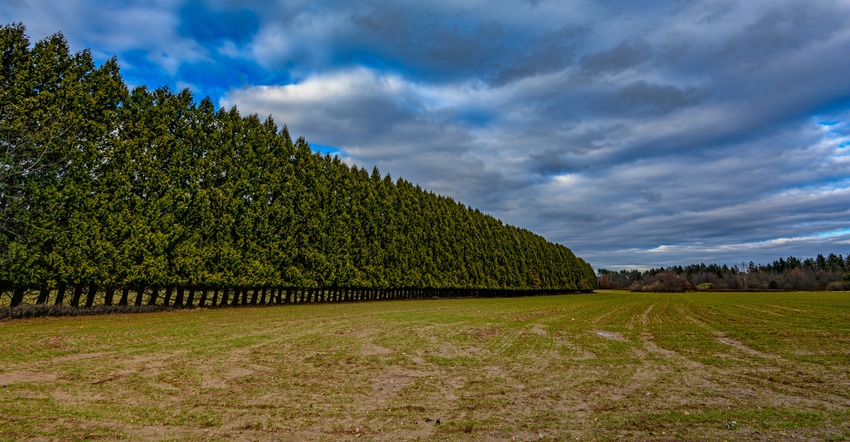February 23, 2022

With winter snow and wind still here, farm and rural residents should think about planting a windbreak. A well-designed, well-maintained windbreak will be appreciated for its usefulness and beauty, with wildlife habitat as a terrific side benefit.
The benefits of a windbreak or shelterbelt include providing protection for the home and wildlife habitat, esthetics, energy conservation, recreation, and livestock protection.
A poorly planned windbreak may deposit snow on buildings, roads, lanes and livestock feeding areas, or contribute to soil wetness problems. Improper selection of plant species for the soils at the site may result in poor survival, slow growth, and plant or tree stress.
A windbreak is a barrier composed of trees and shrubs that redirects and modifies the force of the wind.� Height, density and orientation are the major factors determining the protection a windbreak provides, but other factors such as width, cross-sectional shape, length and composition are also important. In general, a proper windbreak will protect an area 100 times its height.
Spring planting recommended
A windbreak can be planted almost any time during the growing season, but to enhance its chances for survival, spring planting is recommended. Several county conservation districts sponsor an annual spring tree sale and sell thousands of trees, shrubs, fruit trees and berry plants, select flowers, and other conservation-related items.
Contact conservation districts through the web, email or directly, as order deadlines are often in March with April pickups.
Species selection may reflect the landowner's purpose for establishing the windbreak. Energy conservation requires the use of dense vegetation, most likely coniferous species. Windbreaks should be 75% to 80% dense for best protection. The minimum density for an effective farmstead windbreak is 65%.
Species with a high-density rating, such as spruce, fir and arborvitae, have densities of 90%. Two rows should provide sufficient density, but an additional row is recommended to fill any gaps that might occur between trees.
Pines have a different branching pattern than the spruces or firs. During their early development, pines tend to be compact and provide a density of about 85%. However, as they increase in age, the branches begin to thin out, and density drops to 40% to 65%.
It is not a good idea to plant the entire windbreak to one species. Monocultures can encounter serious problems with disease and insect pests, and they lack variety in texture and color. On the other hand, trees of the same species and growth habits should be planted within the same row.
For more information about windbreaks or shelterbelts, contact your local conservation district office.
Birkey is an MSU Extension educator emeritus and owner of Spartan Ag.
You May Also Like




